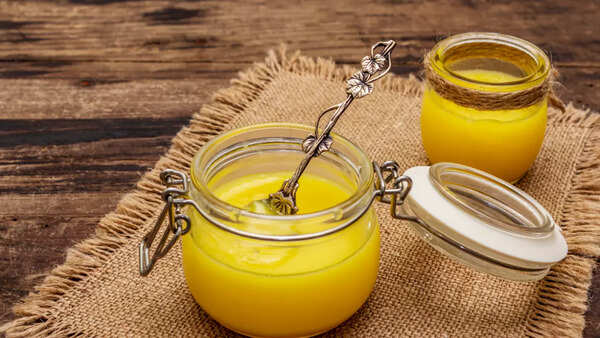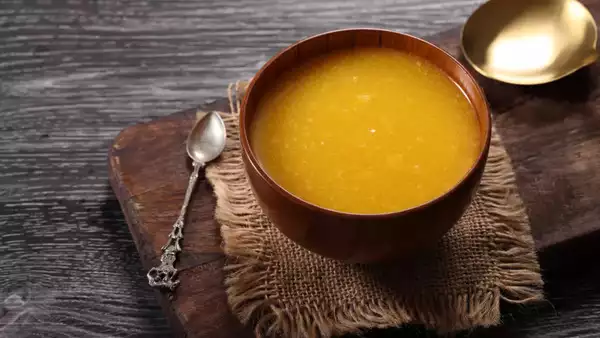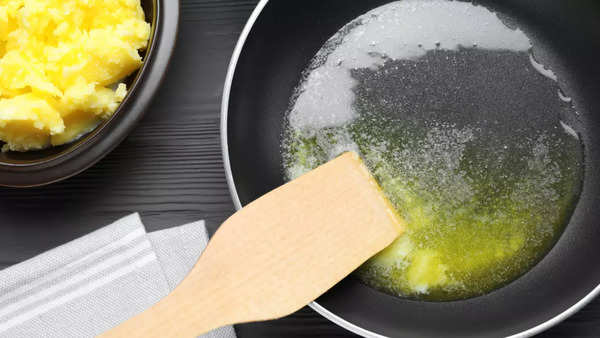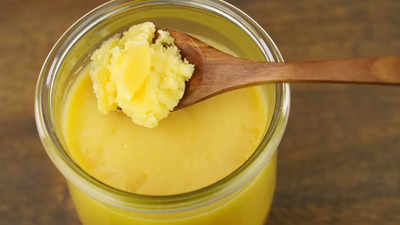Ghee, also known as clarified butter, is a staple food in many Indian households and is highly valued in Ayurveda for its medicinal properties, believed to aid digestion, boost immunity and nourish skin and hair. But what if melted butter that you use is made from vegetable fat, mono- and diglycerides of fatty acids and can cause serious health questions? Well, 25 tons of such adulterated ghee was recently confiscated in Surat. Scroll down to read the details and how you can identify fake ghee.
According to reports, the State Surveillance Cell (SMC) raided a factory in Masma, GIDC Olpad, Surat and seized 25 tonnes of adulterated ‘pure ghee’. According to information, two people have been detained in this case. Officials also reportedly seized 496 cartons of adulterated cow ghee worth Rs 23.84 lakh, essence and other raw materials worth Rs 69.67 lakh, equipment worth Rs 16.59 lakh, packaging materials worth Rs 7.55 lakh and two cell phones. telephones. The total value of the seized materials is Rs 1.17 crore. Primary investigation revealed that the accused were supplying packaged ghee to Maharashtra and Rajasthan. They sold adulterated ghee under the brand names Shubh Cow Ghee, Labh Cow Ghee, Oreo Cow Ghee, and Savro Cow Ghee. And during the investigation, the officials found empty boxes with Dharti, Radhe and Krishna brand labels.

Officials also seized the essence and mixture of vegetable fat, mono- and diglycerides of fatty acids used to make the adulterated ghee. And samples of this raw material are sent for forensic medical examination.
While adulteration of ghee and other edible products has become quite common, it is important for the masses to exercise extreme caution while purchasing the products. Here are some tips and tricks to follow when buying ghee and spotting fake ghee.
Appearance and Texture:
Traditionally, ghee in its pure form has a golden color and a rich creamy texture. When held up to the light, it should appear clear and transparent. A pale color of ghee may indicate the presence of preservatives and should be avoided.
Packaging and label:
It is important to pay special attention to the packaging and label of ghee products. A genuine brand of ghee will have all the major regulatory compliance certificates. License number, packing date, expiration date should be carefully checked before buying ghee.

Aroma and taste: Naturally, ghee has a nutty aroma and a uniform consistency. Ghee should never smell burnt, as it has a high heating temperature. The burning smell may be due to the presence of water or additives. Hence, such ghee should be avoided at all costs.
While you can evaluate your ghee using the above criteria before you buy it, there are other ways you can make sure the ghee you’re consuming is good for you.
Palm test: Just pour the frozen ghee on your palm and if it starts melting instantly, then the ghee is clean. Otherwise, it is not and such ghee should be avoided.
Boiling test: Just boil the ghee and remember that ghee has a higher heating temperature so when it starts to smell burnt you know it’s not pure ghee. Bubbles and steam when ghee is boiled also indicate adulteration of ghee. After you boil the ghee, cool it in a jar. If you see layers forming in the jar, it means that there are other oils in the ghee.

Water test:
Fill a glass of ordinary water at room temperature, add ghee to it, if it floats, it is clean, and if it sinks, then foreign substances have entered the ghee.
Salt testcomment:
Add a pinch of hyaluronic acid and a tablespoon of salt to two spoons of ghee, after 20 minutes check the color of the ghee. If the ghee turns red, then it is adulterated.
One sample:
Add two drops of iodine solution to the ghee, if it turns purple, it means there is starch in the ghee.











